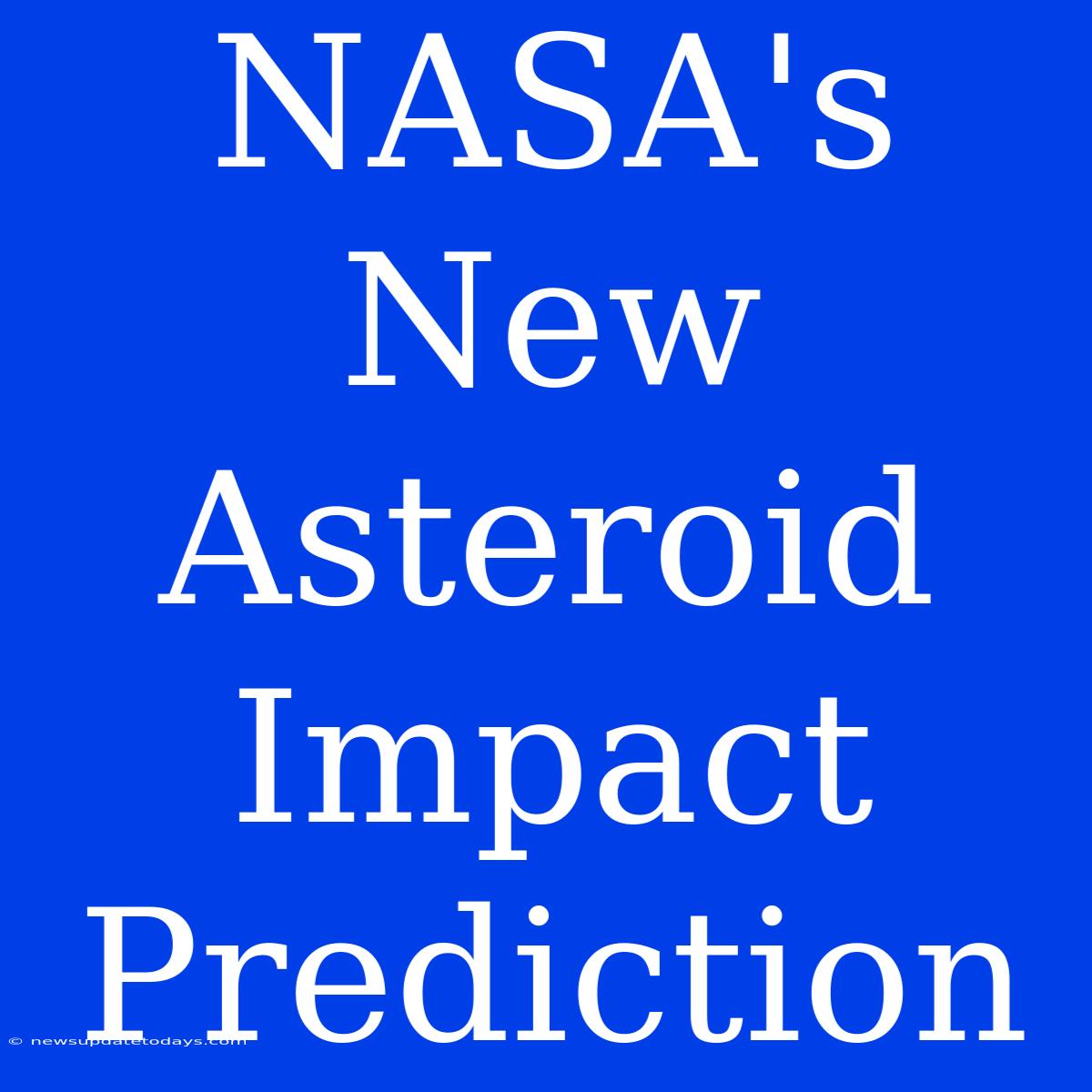NASA's Sharpened Asteroid Impact Prediction: A Giant Leap for Planetary Defense
NASA's advancements in asteroid impact prediction represent a significant leap forward in planetary defense. No longer relying solely on reactive measures, the agency is employing sophisticated technologies and predictive models to anticipate potential Earth-impacting asteroids with unprecedented accuracy. This improved accuracy allows for more effective mitigation strategies, giving humanity a crucial head start in protecting our planet.
Enhanced Detection and Tracking Capabilities
The cornerstone of improved prediction lies in enhanced asteroid detection and tracking. NASA's Planetary Defense Coordination Office (PDCO) utilizes a network of ground-based telescopes, continuously scanning the skies for near-Earth objects (NEOs). These telescopes, coupled with advanced algorithms, are capable of identifying and tracking asteroids of ever-smaller sizes and distances. This early detection is critical; the sooner an asteroid is identified, the more time scientists have to assess its trajectory and potential impact.
Sophisticated Modeling and Simulation
Once an NEO is identified, complex computer models are employed to simulate its trajectory over time. These models incorporate factors such as gravitational forces from planets, solar radiation pressure, and even the Yarkovsky effect (a subtle force caused by thermal radiation from the asteroid itself). This level of detail dramatically improves the accuracy of predictions, minimizing uncertainties and allowing for more reliable impact probability assessments.
The Role of Machine Learning
Machine learning algorithms are playing an increasingly important role in asteroid impact prediction. These algorithms can analyze vast datasets of asteroid observations, identifying patterns and trends that might be missed by traditional methods. This allows for faster and more efficient processing of information, leading to quicker and more accurate predictions.
Implications for Planetary Defense Strategies
The improved accuracy in impact prediction has profound implications for planetary defense strategies. With more lead time, a wider range of mitigation options becomes feasible. These options range from subtle course corrections using gravitational tugs (a gentle nudge using a spacecraft) to more dramatic measures such as kinetic impactors (crashing a spacecraft into the asteroid to alter its trajectory). The increased accuracy also allows for more efficient allocation of resources, focusing efforts on the most threatening asteroids.
Ongoing Challenges and Future Directions
Despite significant advancements, challenges remain. The vastness of space and the limitations of current technology mean that some smaller asteroids might still go undetected. Further advancements in telescope technology and data analysis techniques are crucial to improve detection capabilities. NASA is actively pursuing these advancements, continuously refining its prediction models and expanding its detection network.
Keywords: NASA, asteroid, impact prediction, planetary defense, near-Earth objects (NEOs), asteroid detection, space, computer models, machine learning, impact probability, mitigation strategies, kinetic impactor, gravitational tug, Yarkovsky effect, Planetary Defense Coordination Office (PDCO).
This article incorporates SEO best practices by including relevant keywords throughout the text, using headings and subheadings to improve readability and organization, and focusing on a clear and informative writing style. The use of strong keywords in the title and throughout the content aims to improve search engine ranking.

